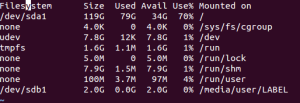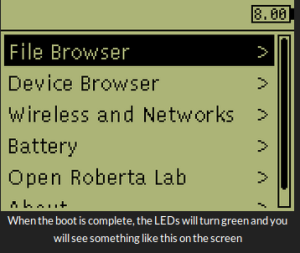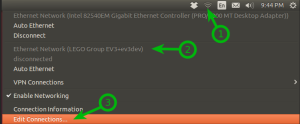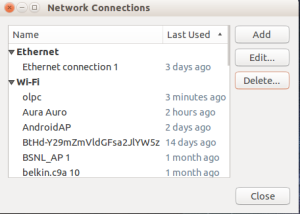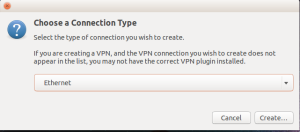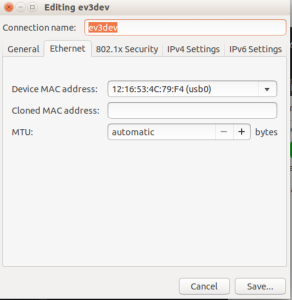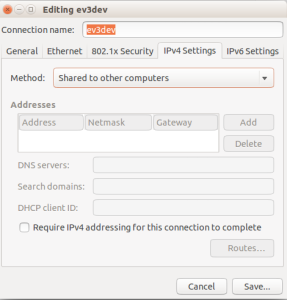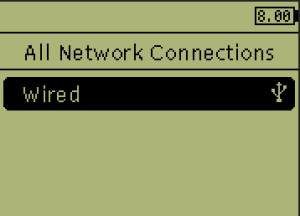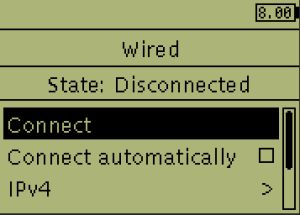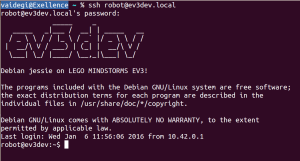All Aura Auro team members are attending the Stewardship Workshop this. Some of us have already done satge I of this course. Arun and Naveen are attending it fresh. The session one is over. My biggest realization of session 1 has been the clarity that has come now which was somewhat missing from last years. I got know that I have more ‘fears’ also which I couldn’t also realize last time I did the course. All is well ‘fears’ gives me an opportunity to work from my possibilities.
Setting up ev3dev for Mindstorms
In the beginning we used LEGO software ( like scratch – stitch commands together) to program the Mindstorm Robot. Now we switched to Python. Let see how to set it up. All we need is SD card (2GB-32GB)
Need to create ev3 environment in the brick ( like a brain of the Mindstorm) to support the python. Download the latest .xz image file for ubuntu (.zip file for windows) from the website https://github.com/ev3dev/ev3dev/releases
Copy the image on to the SD card through terminal:
1. Make sure that your SD card is unplugged. Then run df. command: df -h. You should see something like this:
 2. Now insert you SD card and run
2. Now insert you SD card and run df again. command: df -h
3. Unmount your SD card. If it has more than one partition. command: sudo umount /dev/sdb1
![]() 4. Download. command: xzcat ~/Downloads/ev3-ev3dev-jessie-2015-12-30.img.xz | sudo dd bs=4M of=/dev/sdb
4. Download. command: xzcat ~/Downloads/ev3-ev3dev-jessie-2015-12-30.img.xz | sudo dd bs=4M of=/dev/sdb
 Note: You can monitor the progress of this by running the following in another terminal. command: sudo watch kill -USR1 $(pgrep ^dd)
Note: You can monitor the progress of this by running the following in another terminal. command: sudo watch kill -USR1 $(pgrep ^dd)
5. When copying the image file has completed, run command : sync
Boot ev3dev:
Boot the mindstorm. You will see the screen like this. If the voltage drops below 5V the brick will turn off. All not saved data may be lost. Keep in mind, that it may take a much longer time from 8V to 6.5V than from 6.5V down to 5V.
Connecting to the Internet via USB:
1. On your host computer, with the EV3 connected via USB, open up the network application indicator (1). You should already see an entry for LEGO Group EV3 (2), go to edit connection (3).
2. Add new network
3. Make sure Ethernet is selected and then click Create
4. Enter a Connection Name. The MAC address will always start with 12:16:53, so choose that one.
5. Then click on the IPv4 Settings tab and change the Method to Shared to other computers. Click Save when you are done.
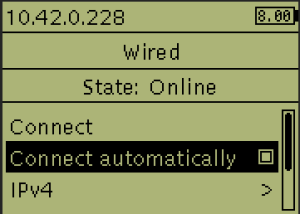 7. Then connect to the EV3 using ssh as shown in the picture. Command: ssh robot@ev3dev.local
7. Then connect to the EV3 using ssh as shown in the picture. Command: ssh robot@ev3dev.local
Note: The default password is maker. You can change the password by typing psswd in the command terminal.
In next blog will see how to program Mindstorms in python.
My Personel Reflection
Aura Auro Design Center
-Vaidegi Gunasekar
My stands are Perseverance and Agency (capacity to act in any given situation). AuraAuro laid a clear path for my career as well as social activities (teaching). In this duration of one year I learnt many things in Electronics (which I never even thought of in my under graduation) and Teaching (how to teach and classroom management). This gives me satisfaction on what I did in the entire course of learning.
As an Engineer
I can see myself that I’m growing as Engineer. I’m not doing the same work repeatedly. Everyday I’m doing something new or in different way. This makes me think, engage and apply thoughts based on my previous mistakes. AuraAuro also created space to collaborate and discuss when I face an issue or when I build something.
As a Teacher
As per my perspective, a teacher was one who give all the instructions (what to do and don’t). But Aura Auro broke that idea. It created a environment where I observe and guide the students instead of giving them each and every instruction to do something. In the middle I learnt being ‘effective’ is more important than being ‘nice’ to all the children.
I also learnt that “ If you want to understand something, change it. But, if you want to change something, understand it.”
zfill in python
Description
The method zfill() pads string on the left with zeros to fill width.
Syntax
Following is the syntax for zfill() method
Parameters
width — This is final width of the string. This is the width which we would get after filling zeros.
eg;
str = “happy new year”
print str.zfill(40)
print str.zfill(15)
Output:
00000000000000000000000000happy new year
0happy new year
1st Anniversary
We at Aura Auro Design celebrated our 1st anniversary today(02-01-2016). We celebrated it in STEM land at Udavi school. The children of Udavi and Isai Ambalam conducted a small fair. Teachers from both schools came and visited the place. We also had samosas and parotas for refreshment. Feels like we started just few months ago but Aura Auro Design is 1 year old today!!!
My Reflection – 2015
I started the year as a novice knowing very little about work and life. Aura Auro has brought a big change to me. I have learnt a lot during this one year.
As Aura Auro is an electronics centre, it is essential that I am good at it. I knew very little at the beginning. Aura Aura has given me an oppurtunity to learn and grow as an Engineer. I have learnt to analyse circuits, run simulations, build PCB boards, windows and linux admin, programming in python, blogging etc… I am learning to design circuits, working efficiently as a team, managing time, being organized.
Teaching was completely new to me. Over the year I have come to terms in managing a class. It gives me happiness to guide the children and share some of the knowledge I have.
Setting up STEM land in Udavi was a big learning curve. I was put in situations where I felt I was responsible. Though I did fail at times it was a learning experience.
We presented a paper in Mumbai, episteme 6 – International conference on Stem education. It gave us an opportunity to talk about the different things we do at school. The paper was accepted well and felt that we are going in the right directions.
Making contributions to schools and to Auroville makes me feel that I am doing something to the society around me.
Attending Monica Sharma’s workshop early in the year was a big positive for me. I learnt lots of tools and that helped me at work, school and personally also.
Overall Aura Auro has been a place where I am growing daily, learning and experimenting new things.
Article about STEM Land in Auroville Today – Dec 2015
ALICE IN STEMLAND
All you need to be a poet in Sanjeev’s STEM (Science, Technology, Engineering, Mathematics) Land is a love of solving problems and abstractions. A bit of madness helps as well. This is what one finds in this cosy and open space at the top floor of Udavi school, where a few youth and a bunch of children come together to co-learn programming in ALICE (a 3D programming language), electronics, strategy games and much more.
Having earned a Doctoral degree in Electronics and spending most of his life designing chips for a living, Sanjeev is an Aurovilian whose relationship with children’s education and Auroville go back 13 years when he met Subash and Lourdes at an educational conference and came to visit Auroville schools. Subsequent conversations around the exisiting plethora of pedagogical techniques helped shape the initial ideas for the STEM Land. It took 11 more years and an experience in Vipassana for Sanjeev to move to Auroville to test his ideas.
Initially, he began volunteering in the schools in Auroville, teaching Maths and Electronics and sticking to what a ‘good’ teacher does – being familiar with the textbooks and find ways for fun learning within the curriculum. During this time he happened to meet a donor of old laptops to the school. Sanjeev recounts, “The donor asked us if the old laptops were being put to any use and if the computer lab was functional. What do you do in your computer lab,” he asked, and I realised I didn’t know.’ This got me thinking. In a country with around 3.5 lakh computer labs, the children were often using them as a personalised television or to play games – but even the educational games are not entirely convincing in terms of their actual purpose.”
After letting the kids ‘meddle’ with the old laptops and using them to create programmable hardware, Sanjeev finally decided to experiment and start his own ‘lab’. It was during this time he met Bala, an Auroville youth, who along with Sundar and Vaidegi started working on educational interventions in January. Their experiences led them to set up the STEM Land in Udavi school this October. They were inspired by The Stewardship for New Emergence workshop offered by Dr.Monica Sharma and are supported by Aura Semi-Conductors Ltd. to create this space for children, where the classroom intervention was reformulated into enabling children to lead their learning environment rather than be passive recipients. This is in accordance with Sri Aurobindo’s principle that ‘nothing can be taught’.
Currently, STEM Land comprises not only Sanjeev, Bala, Sundar (Auroville youth) and Vaidegi (a youth from the bio-region) but also others like Naveen, another Auroville youth. He frequents the place to volunteer as well as learn aspects of electronics through classes that Sanjeev offers once a week for adults. Though most youngsters leave Auroville or their villages, the youth with Sanjeev are the ones who want to stay back and find meaningful pursuit in their home places.
For Sanjeev, it is essential to retain youngsters and create a workforce to support the electronic infrastructure of a city, which Auroville’s aims to become. With this belief he continues his work in STEM Land, offering programming lessons in Scratch, Blender, ALICE, along with over hundreds of learning resources like strategy games, and books. The classes combine older and younger children from grades 5 to 9, and volunteer teachers are expected to aide them with their requests rather than coming-up with lesson plans. The children have already come a long way in this experiment, with most taking responsibility for choosing their own study topics and finding the means to learn them. Anita, one of the students from Isai Ambalam, particularly enjoys her time in STEM Land, where she recently started using ALICE, finding it amazing to create animations using codes.
“It’s high time we shift from our chalk-and-talk teaching method, and explore shared learning experiences and methods in classrooms”, Vaidegi says. Co-learning and facilitating the experiential learning techniques in STEM Land helps the children understand their subject even more and makes this shared experience rewarding and enjoyable.
In a country with a booming population and increasingly unproductive child-to-teacher ratios, especially in rural environments, innovative experiments like Sanjeev’s are glimpses of alternatives that could make a real difference in our education system.
episteme 6 – Mumbai
We attended a conference on STEM education in Homi Bhabha Centre for Science Education, Mumbai (Dec 15 – Dec 18, 2015) . Several papers were presented. But the one that stood out for me(or maybe those that I understood completely ie, excluding our paper!) was the one on Action Research. I liked it because I could in some ways connect to it. It little bit reminded of the things that happen when I am in class. It was about a needle worker cum teacher trying to bring the students under control. She got help from her facilitator to tackle the issue. I liked it very much. The other one I found interesting was the one about Stemland leadership and fellowship programme(held in the States). It was about a programme for teachers where they were asked do to various activities.
We here at Aura Auro Design have conversations about our classes and children, which I thought was very much similar to Action Research. I learnt from this conference that documenting the work we do in STEM land is important.
Tkinter Toplevel Widget
The Toplevel widget work pretty much like Frame, but it is displayed in a separate, top-level window. Such windows usually have title bars, borders, and other “window decorations”.
The Toplevel widget is used to display extra application windows, dialogs, and other “pop-up” windows.
ref: http://effbot.org/tkinterbook/toplevel.htm
Debugging of Harmonium Circuit
Maker space of STEM land is used for building new things based on Electrical or Electronics ( sometimes 3D). As the first step, students started to learn soldering using veda kits (soldering kits). One of students ( Yuvaraj, from 8th grade) soldered the kit of Harmonium. Unfortunately that did not work. So we simulated the circuit first in order to make sure there is no bug in that kit design. As expected no bug in the design.
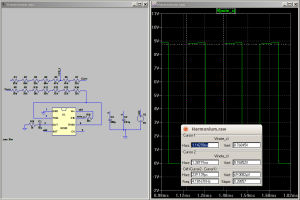
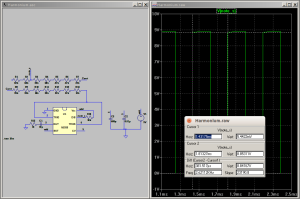
Harmonium simulation file.
Then started debugging the circuit and found the bug in placement of the IC ( Flipped). Now Yuvaraj happy!!!!.


